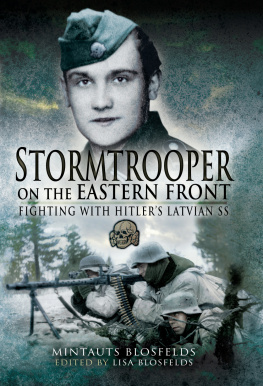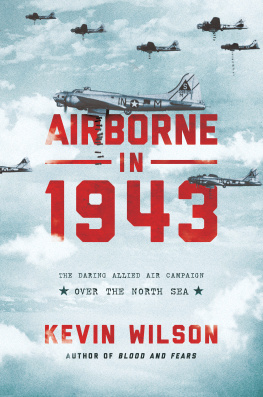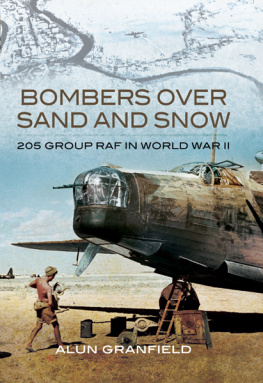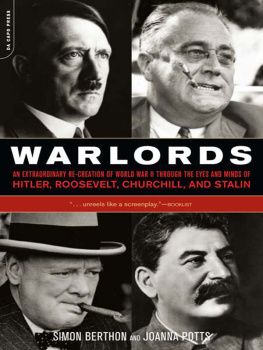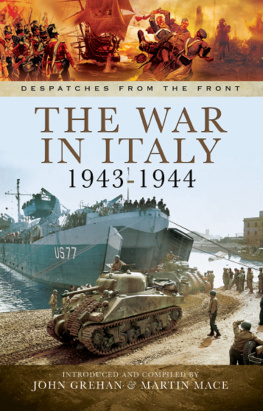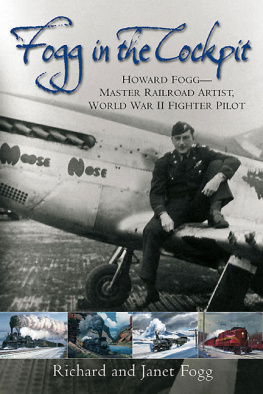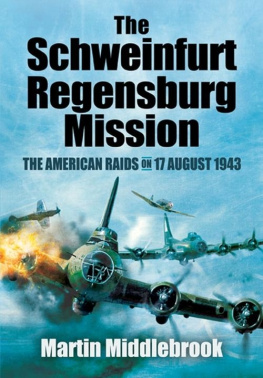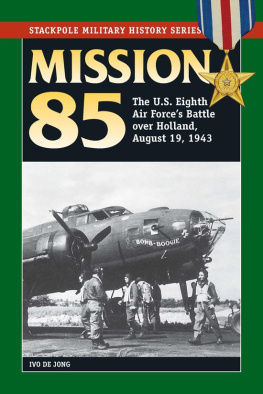This edition is published by PICKLE PARTNERS PUBLISHINGwww.picklepartnerspublishing.com
To join our mailing list for new titles or for issues with our books picklepublishing@gmail.com
Or on Facebook
Text originally published in 1984 under the same title.
Pickle Partners Publishing 2014, all rights reserved. No part of this publication may be reproduced, stored in a retrieval system or transmitted by any means, electrical, mechanical or otherwise without the written permission of the copyright holder.
Publishers Note
Although in most cases we have retained the Authors original spelling and grammar to authentically reproduce the work of the Author and the original intent of such material, some additional notes and clarifications have been added for the modern readers benefit.
We have also made every effort to include all maps and illustrations of the original edition the limitations of formatting do not allow of including larger maps, we will upload as many of these maps as possible.
An Application of the Principles of War to the Schweinfurt Raids on 17 August 1943 and 14 October 1943
By
Major Thomas J. Griffith
PREFACE
History provides a valuable classroom for learning about the art and science of warfighting. The experiences of history, both good and bad, are receiving renewed emphasis in the professional military education programs of the Air Force. Recognizing this, an analysis of great air battles provides lessons that can be of value to todays airmen. The technology has changed, but the basic principles still apply.
This paper looks at a great air battle of World War II. The battle pits the heavy bombers of the U.S. Eighth Air Force against the German Luftwaffe fighters defending the ball-bearing factories at Schweinfurt, Germany. Applying the principles of war from AFM 1-1, Basic Aerospace Doctrine of the United States Air Force, provides insight into the strengths and weaknesses of the forces involved. Additionally, an analysis of the battle demonstrates the importance of understanding the principles of war and their value in warfighting.
The author expresses appreciation to Major (Lieutenant Colonel selectee) Robert L. Gregory, ACSC/EDOW, for the motivation and guidance provided during this project.
ABOUT THE AUTHOR
Major Thomas J. Griffith has experience as an OV-10 Forward Air Controller in Southeast Asia, a UPT Instructor Pilot/Flight Examiner and a base level Personnel Officer. He was a JUVAT fighter pilot in the F-4D, and his most recent assignment was in the F-4E. Major Griffith has a BBA in Personnel Management from Texas Tech and a Masters Degree in Finance from Oklahoma State University. He is a graduate of Squadron Officer School and Air Command and Staff College.
CHAPTER ONE THE BATTLE
In 1941, under the leadership of then Lt General H. H. Hap Arnold, Chief of the Army Air Corps, the Air War Plans Division (AWPD) of the Army Air Corps began developing the strategy to be used by American air power during World War II. (6:7-11) Falling back on their experience as students and instructors at the Air Corps Tactical School, the planners (Colonel Harold L. George, Lieutenant Colonel Kenneth Walker, Major Lawrence S. Kuter and Major Haywood S. Hansell, Jr.) employed a theory using strategic bombardment to destroy an enemys warfighting capability. Large formations of heavy bombers flying during the daytime at high altitude would use precision bombsights to identify and destroy pinpoint targets. (6:7) At that time, it was believed that fighters could not be built with sufficient range to escort the bombers. Therefore, the bombers were heavily armed and depended upon the defensive firepower of massive formations for protection. (6:7,9) This firm belief in heavy bombers laid the foundation for the American use of daylight precision bombardment to defeat Germany.
The American plan developed for the destruction of German warfighting capability was the A.W.P.D.-l plan. This plan and its subsequent revisions established the need for air superiority prior to an allied invasion of the European continent.
The plan acknowledged that the German air force, especially the German fighter force, would have to be defeated before an invasion could be contemplated, and that such a defeat might also be necessary to the prosecution of the air offensive itself. Hence, defeat of the German air force was accorded first priority among air objectives an intermediate objective of overriding importance, to take precedence over the Primary Air Objectives themselves. (5:vii)
The American and British political and military leaders believed that the destruction of the German air force required attacking the industrial base of the German economy. Both countries supported the use of strategic bombing as a means of defeating Germany. But they disagreed upon the method of implementation. The British favored night area bombing while the Americans preferred daylight precision bombing. (1:41-42)
The British bombing effort and preference for night operations were based upon their earlier experience with the German bombing offensive against England. (1:41)
They had whipped the German air force at its peak in daylight defense, and had demonstrated beyond all question the inability of the Luftwaffe to maintain daylight raids. The Germans had, however, proven themselves capable, even with a sorely weakened bomber force, of inflicting punishing damage and destruction upon England under the mantle of darkness. For these reasons, and because of their firm belief that daylight attacks were suicidal in the face of the vigorous and highly capable German fighter force, the British disdained the daylight bombing campaign. (1:41)
The Royal Air Force (RAF) used the cover of night to conduct their area bombingsraids which included the bombing of ... the factories and the dwellings of the factory workers. (4:254) The darkness also served as a means of defense for the lightly armed British bombers that had... failed in daylight missions against the continent. (2:vi; 4:255) This British experience with the results of night versus daylight bombing left them skeptical of the ability of the Americans to succeed with their plan for daylight precision bombing. (2:vi)
However, Eighth Air Force was determined to prove the American strategy of daylight precision bombing....the Army Air Forces program called for a sustained daylight bombing campaign, carried out with high precision, which rather than attempting to destroy entire cities in saturation raids, would wreck carefully chosen industrial objectives. (1:41) Heavily armed B-17 Flying Fortresses and B-24 Liberators equipped with the highly accurate Norden bomb sight provided the thrust to the argument for daylight precision bombing. (2:26)
In January 1943, the Combined Chiefs of Staff (CCS), composed of Allied military leaders, and the Allied Chiefs of State met at Casablanca, Morocco, to plan the Allied strategy for the war. During the Casablanca Conference, the CCS confirmed that...an invasion of the western European continent could not be launched in force until at least the spring of 1944. (6:14) In conjunction with this determination, the CCS decided that the Eighth Air Force and the RAF should prepare the way for the invasion by launching a...sustained bomber offensive from bases in the United Kingdom. (6:14) The Combined Bomber Offensive (CBO) Plan evolved from the Casablanca Conference and established a combined bombing effort by the U.S. Army Air Forces and the Royal Air Force, each operating on the basis of its own capabilities and concepts. (1:34) The Royal Air Force would conduct night bombing missions against strategic areas while the Army Air Force would conduct precision bombing against specific targets. (1:34) In June 1943, the CBO was implemented by a directive from the Chief of the Air Service to the Commanding General of Eighth Air Force, General Ira C. Eaker. The directive stated that:




